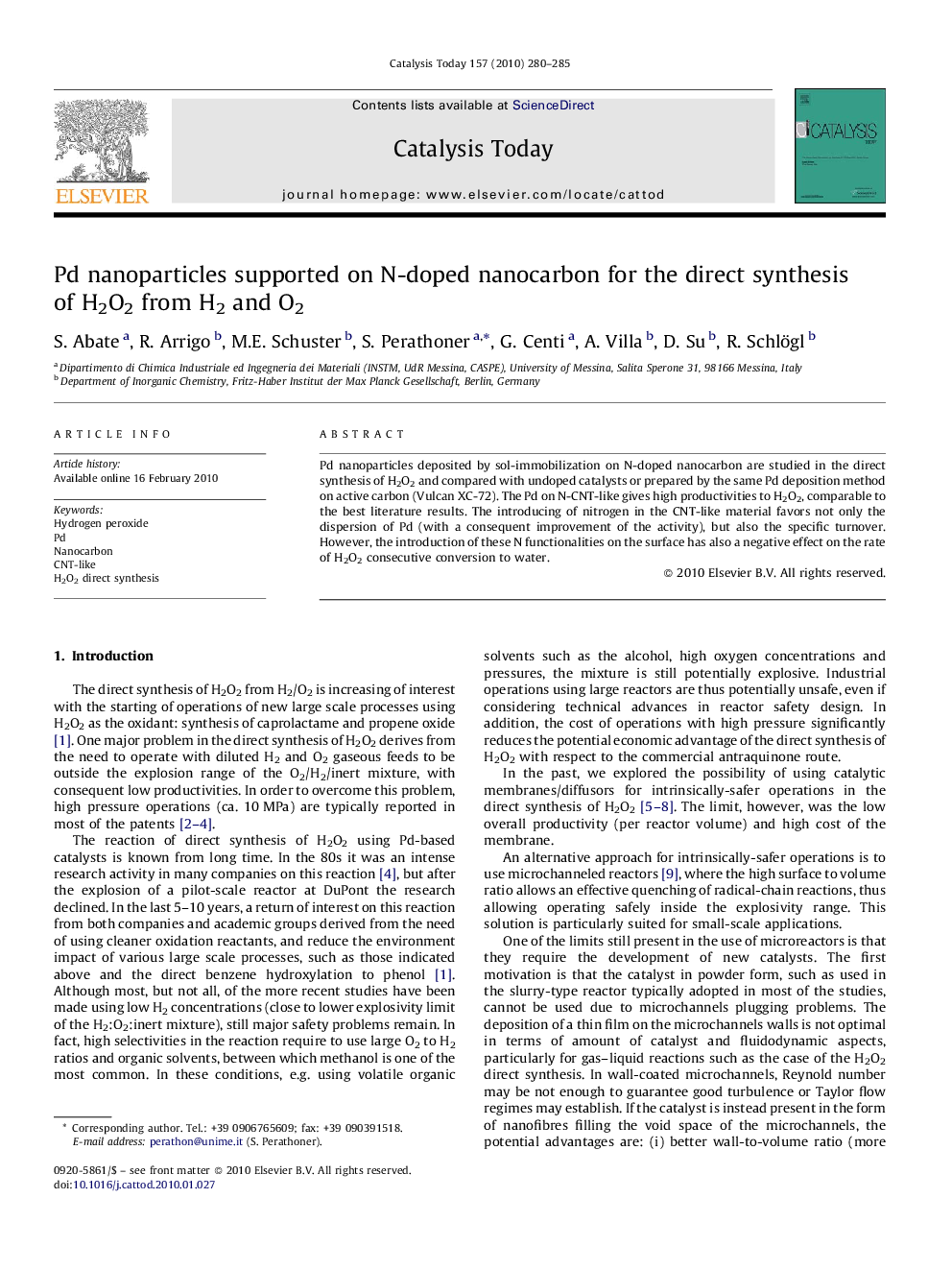| Article ID | Journal | Published Year | Pages | File Type |
|---|---|---|---|---|
| 56232 | Catalysis Today | 2010 | 6 Pages |
Abstract
Pd nanoparticles deposited by sol-immobilization on N-doped nanocarbon are studied in the direct synthesis of H2O2 and compared with undoped catalysts or prepared by the same Pd deposition method on active carbon (Vulcan XC-72). The Pd on N-CNT-like gives high productivities to H2O2, comparable to the best literature results. The introducing of nitrogen in the CNT-like material favors not only the dispersion of Pd (with a consequent improvement of the activity), but also the specific turnover. However, the introduction of these N functionalities on the surface has also a negative effect on the rate of H2O2 consecutive conversion to water.
Related Topics
Physical Sciences and Engineering
Chemical Engineering
Catalysis
Authors
S. Abate, R. Arrigo, M.E. Schuster, S. Perathoner, G. Centi, A. Villa, D. Su, R. Schlögl,
